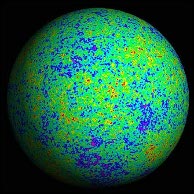My research in cosmology
A list of my papers can be found on ADS and the ArXiv

My research spans a broad range of topics in cosmology and large scale structure, focusing primarily on using the cosmic microwave background (CMB) to probe the physics of the Universe, such as inflation, cosmic defects, magnetic fields and dark energy.
In my PhD thesis, working under the supervision of Paul Steinhardt, I examined how the CMB temperature and polarisation could be used to detect primordial gravity waves, which would say much about the epoch of inflation. In later work with Neil Turok, I showed how the CMB temperature and polarisation would be correlated, an effect which subsequently was detected.
In recent years, I have been using the CMB to constrain models of dark energy and modified gravity, in particular using integrated Sachs-Wolfe effect, where CMB anisotropies are created as dark energy causes gravitational potentials to decay. Neil and I first proposed that the ISW effect could be seen via correlations between the CMB and the local density field (Crittenden and Turok, 1996). This effect was not seen in early CMB data, but when WMAP came out, Stephen Boughn and I were the first to measure it (Nature 2004.) The significance of the signal has mounted as more large scale structure measurements have been exploited (Giannantonio et al. 2008).

